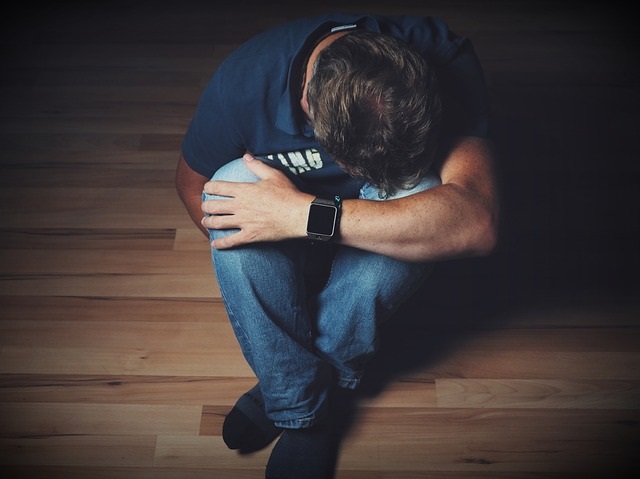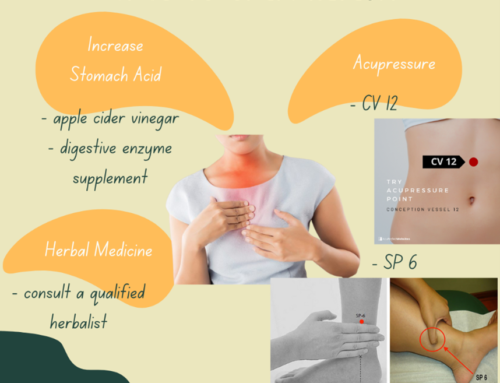What is Pain?
The International Association for the Study of Pain (IASP) defines pain as being an unpleasant emotional and sensory and experience that is associated with actual or potential tissue damage. Pain is influenced by attitudes, beliefs, personality and social factors, and can affect emotional and mental wellbeing, it is not just a physical sensation. Two people may have a similar pain condition but the way that they experience living with pain can be very different. Pain can be very individual.
Acute pain lasts for a short time and occurs following surgery or trauma or other condition. It is a warning to the body to seek help. Most of the time it will improve as the body heals, but sometimes not.
Chronic pain lasts beyond the time expected for healing following surgery, trauma or other condition, and can also exist without any clear reason. Although chronic pain can be a symptom of other diseases and there are changes within the central nervous system.
Here are 2 great videos that show very simply…
- How to “Understand Pain and what to do about it in 5 minutes”
https://www.youtube.com/watch?time_continue=18&v=RWMKucuejIs
- And describe “Why thing hurt”
https://www.youtube.com/watch?time_continue=61&v=gwd-wLdIHjs
How many people are affected by Pain in Australia?
Pain is the most common reason that people seek medical help—yet it remains one of the most neglected and misunderstood areas of healthcare. One in five GP consultations involves a patient with chronic pain and almost five percent report severe, disabling chronic pain. It is also the most common reason for people to seek out acupuncture. 1 in 5 Australians lives with chronic pain including adolescents and children. This prevalence rises to 1 in 3 people over the age of 65. The prevalence of chronic pain is projected to increase as Australia’s population ages.
Chronic pain is Australia’s third most costly health condition after cardiovascular diseases and musculoskeletal conditions (also associated with chronic pain). Arthritis and back problems, both associated with chronic pain, are the most common reasons people of working age (between 45 and 64) drop out of the workforce, accounting for 40% of forced retirements. Early intervention and adoption of evidence-based treatment could halve the economic cost of chronic pain, estimated at $34 billion. (1)
Could Acupuncture be one of the answers?
These are pain conditions with current strong evidence supporting the effectiveness of acupuncture
- Chronic low back pain
- Knee osteoarthritis
These are conditions with current moderate evidence supporting the effectiveness of acupuncture
- Acute low back pain
- Sciatica
- Neck pain
- Shoulder pain, shoulder impingement syndrome (early stage) (with exercise) and post stroke shoulder pain
- Plantar fasciitis
- Tennis elbow
- Back or pelvic pain during pregnancy
- Temporomandibular (TMJ) pain
- Prostatitis pain/chronic pelvic pain syndrome
How does Chinese Medicine view Pain?
When you come for an acupuncture treatment Kim will feel your pulse and have a look at your tongue (this can tell us a lot about your health), there will also be a lot of discussion about your current and past signs and symptoms.
Chinese Medicine theory looks at the body as a whole, encompassing ones mental, physical and psychological health always in a treatment. So a patient seeking acupuncture for a pain condition will be asked about many other aspects of their health, this includes sleep patterns, energy levels, eating habits and your digestion. A picture or pattern is formulated by your acupuncturist and then acupuncture is used to rebalance your body and renew your health.
Often we may use acupuncture in an area of your body away from your painful condition. The beauty of this is that you can move the affected area during the treatment, to obtain more range of motion and move with more ease.
Renew Acupuncture Clinic encourages you to remain in contact with your primary care treating physician and other therapists
What is the current research status on Acupuncture and Pain?
Chinese medical acupuncture has been used for thousands of years to treat a variety of conditions, however not all of these conditions have a high standard of evidence of efficacy. Australian national law requires claims of efficacy of treatment to be made with reference to evidence of a high standard. For this reason I have quoted and provided recent studies that have evidence of efficacy for using acupuncture for the pain conditions listed below.
You are welcome to view the Acupuncture Evidence Project for in-depth details about the research efficacy.
BACK PAIN
Non-invasive and alternative management of chronic low back pain (efficacy and outcomes).
This literature review found high quality evidence for acupuncture; moderate quality evidence for acupressure. https://www.ncbi.nlm.nih.gov/pubmed/25395114
Non-invasive Treatments for Low Back Pain
156 articles were reviewed and found moderate quality evidence for using acupuncture for low back pain and improved function and low quality evidence for acute low back pain. https://www.ncbi.nlm.nih.gov/pubmed/26985522
Acupuncture for low back pain: an overview of systematic reviews
This overview showed that acupuncture, either used in isolation or as an adjunct to conventional therapy, provides short-term improvements in pain and function for chronic low back pain. https://www.ncbi.nlm.nih.gov/pubmed/25821485
Acupuncture for acute low back pain: a systematic review
The current evidence is encouraging in that acupuncture may be more effective than medication for symptom improvement or relieve pain better than sham acupuncture in acute low back pain. https://www.ncbi.nlm.nih.gov/pubmed/23269281
Effectiveness of acupuncture for nonspecific chronic low back pain: a systematic review and meta-analysis
Acupuncture may be effective for pain and functional limitation in chronic non-specific low back pain. https://www.ncbi.nlm.nih.gov/pubmed/24026151
Evidence-Based Evaluation of Complementary Health Approaches for Pain Management in the United States
Acupuncture was found to be superior to usual care for the management of back pain. https://www.ncbi.nlm.nih.gov/pubmed/27594189
SCIATICA
Comparative clinical effectiveness of management strategies for sciatica: systematic review and network meta-analyses
Acupuncture was found to be effective as the 2nd out of 21 interventions looking at the overall global effect and decreasing the pain intensity of sciatica. https://www.ncbi.nlm.nih.gov/pubmed/24412033
Effectiveness of Acupuncture for Treating Sciatica: A Systematic Review and Meta-Analysis
The results of this systematic review suggest that the use of acupuncture may more effectively relieve leg pain/low back pain and improve global assessment of sciatica when compared with NSAID (ibuprofen, meloxicam, and diclofenac) treatment. Moreover, adjuvant acupuncture may enhance the effect of medications in leg pain/low back pain and sciatica relief. https://www.ncbi.nlm.nih.gov/pmc/articles/PMC4631886/
The Efficacy of Acupuncture for the Treatment of Sciatica: A Systematic Review and Meta-Analysis
A total of 12 studies (involving 1842 participants) were included in this review. The results showed that acupuncture was more effective than conventional Western medicine in the outcomes effectiveness, at decreasing the pain intensity, and reducing the pain threshold.
https://www.ncbi.nlm.nih.gov/pubmed/26425130
NECK PAIN
Which interventions are cost-effective for the management of whiplash-associated and neck pain-associated disorders?
Acupuncture plus usual medical care is cost-effective for neck pain and its associated disorders. https://www.ncbi.nlm.nih.gov/pubmed/26631759
Acupuncture for Neck Disorders
Moderate-quality evidence suggests that acupuncture relieves pain better than sham acupuncture, measured at the completion of treatment and at short-term follow-up and that those who received acupuncture report less pain and disability at short-term follow-up than those on a wait-list. Moderate-quality evidence also indicates that acupuncture is more effective than inactive treatment for relieving pain at short-term follow-up. https://www.ncbi.nlm.nih.gov/pubmed/27145001
SHOULDER PAIN
Treatments for shoulder impingement syndrome: a PRISMA systematic review and network meta-analysis.
For non-operative treatment options at an early stage of Shoulder Impingement Syndrome (SIS), exercise combined with specific exercises, and acupuncture should be considered as the first line choices. https://www.ncbi.nlm.nih.gov/pubmed/25761173
KNEE OSTEOARTHRITIS PAIN
Acupuncture and other physical treatments for the relief of pain due to osteoarthritis of the knee: network meta-analysis
As a summary of the current available research, the network meta-analysis results indicate that acupuncture can be considered as one of the more effective physical treatments for alleviating osteoarthritis knee pain in the short-term. From 152 studies Acupuncture was found to be superior to standard care and muscle-strengthening exercises. https://www.ncbi.nlm.nih.gov/pubmed/23973143
Evidence-Based Evaluation of Complementary Health Approaches for Pain Management in the United States
Acupuncture was found to be superior to usual care for knee osteoarthritis pain. https://www.ncbi.nlm.nih.gov/pubmed/27594189
References
- painaustralia.org.au/about-pain/painful-facts
- https://www.acupuncture.org.au/resources/publications/the-acupuncture-evidence-project-a-comparative-literature-review-2017/
Can I claim insurance for an Acupuncture session?
Yes, most major health fund rebates are claimable on the spot after your treatment.
Is there anything I should do before or after my acupuncture session?
Ensuring that you don’t come to the appointment with an empty stomach is great. And refraining from coffee and alcohol after the treatment is also advised. Drinking lots of water is a recommendation after any session.
Sometimes Kim will give you specific acupressure points on the body to perform acupressure on in the days between treatments to keep the effects of the treatment potent.
What is the easiest way to book my acupuncture session in Watsonia?
Click the book online button and it will take you to the online booking system where you can easily book a time. Please call the clinic on +03 8407 3370 if you have any questions regarding the treatment, your condition or to see if acupuncture could be right for you.
Book your acupuncture appointment and RENEW your health today.









Leave A Comment